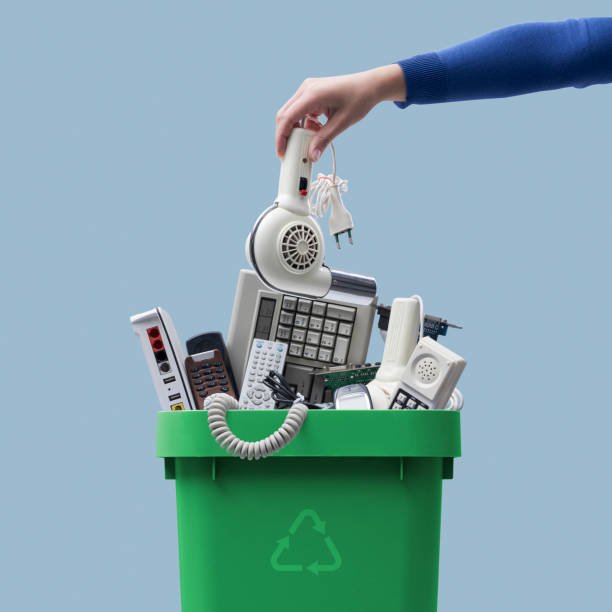The e-waste recycling chain can be divided into three steps: collection, processing, and preparation for end market.
Three Steps of E-waste Recycling Chain
E-waste, or electronic waste, is a growing environmental concern. It refers to discarded electronic or electrical devices, many of which contain toxic materials that can lead to significant environmental and health hazards if not properly managed. As the digital age continues to surge, the volume of e-waste is skyrocketing. In response, a more sustainable and environmentally friendly approach to managing e-waste is needed. This article will explain the three key steps in the e-waste recycling chain: collection, processing, and preparation for end-market.
1. Collection
The first step in the e-waste recycling chain is collection. This involves gathering the discarded electronic devices from individuals, businesses, and organizations. The success of e-waste recycling is heavily dependent on the effectiveness of this stage, as it ensures that electronic waste doesn’t end up in landfills where it can cause environmental harm.
Several methods can be used to collect e-waste, such as drop-off points, recycling events, and take-back programs. In some areas, local governments also provide curbside collection services for e-waste. Public awareness about the importance of properly discarding e-waste is critical at this stage, and educational campaigns often accompany collection initiatives.
2. Processing
After collection, the e-waste is then transported to a recycling facility for processing. Here, it undergoes several stages of treatment to safely extract the valuable materials it contains and appropriately deal with the hazardous substances.
Processing typically involves:
- Pre-processing: This is the manual dismantling of devices where items are sorted by type. It often involves the removal of batteries, cables, and other easily separable components.
- Shredding: Devices are often shredded into small pieces to facilitate further processing. This also helps to reduce the volume of e-waste.
- Sorting: After shredding, the e-waste particles are sorted into different material types. This is often done with automated systems, which can separate ferrous and non-ferrous metals, plastic, and glass.
- Separation of high-value materials: Further treatment processes are used to separate and recover high-value materials, such as gold and copper, from the shredded particles.
- Safe disposal of toxic substances: Hazardous materials like lead and mercury are carefully separated and safely disposed of in accordance with local environmental regulations.
3. Preparation for End-Market
The final step in the e-waste recycling chain is preparing the recovered materials for their end-market. Metals, plastic, and glass are often sold to manufacturers as raw materials for new products. This step is vital as it helps reduce the demand for new materials, thus conserving resources and reducing the environmental impact of mining and manufacturing.
This step may also involve further refining of certain materials. For example, metals may need to be purified before they are ready for sale. Similarly, plastics may need to be melted down and reformed into usable pellets.
E-waste recycling plays a crucial role in combating the increasing problem of electronic waste. The three steps – collection, processing, and preparation for end-market – are all essential in ensuring that e-waste is recycled efficiently and effectively. By understanding these steps, we can all play our part in reducing the environmental impact of our digital lifestyles.





